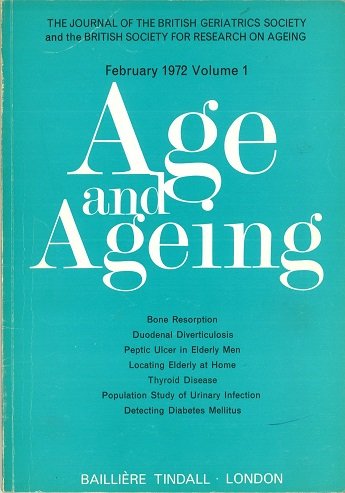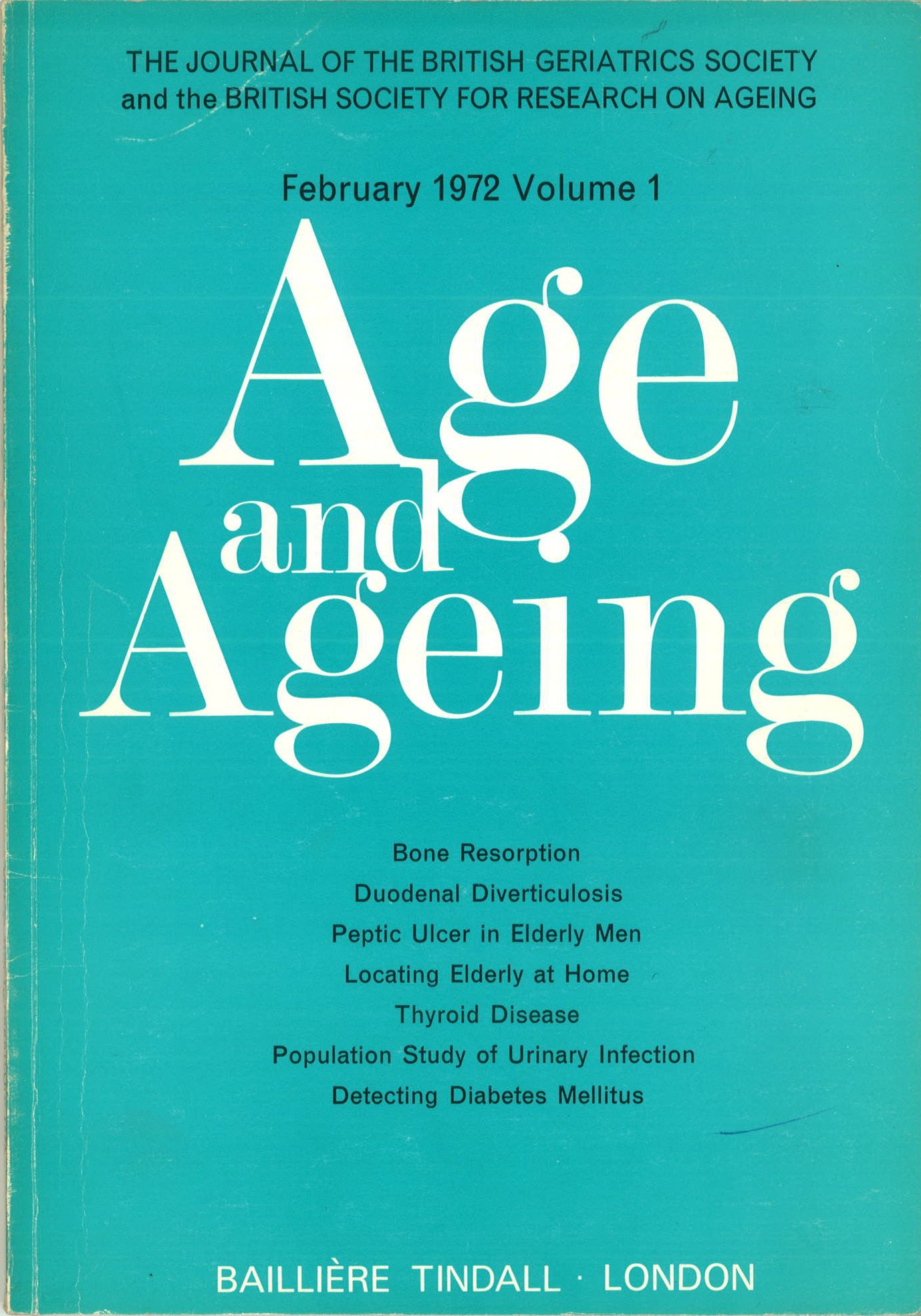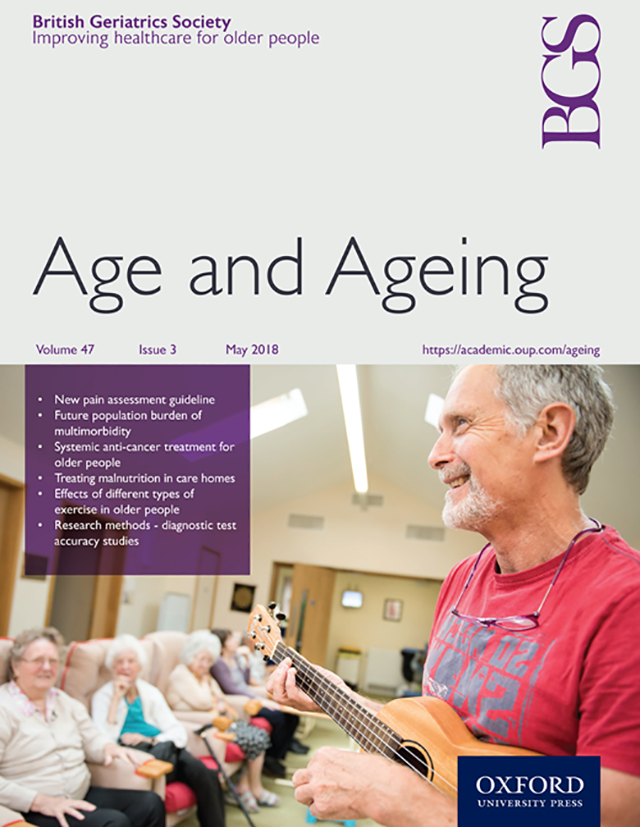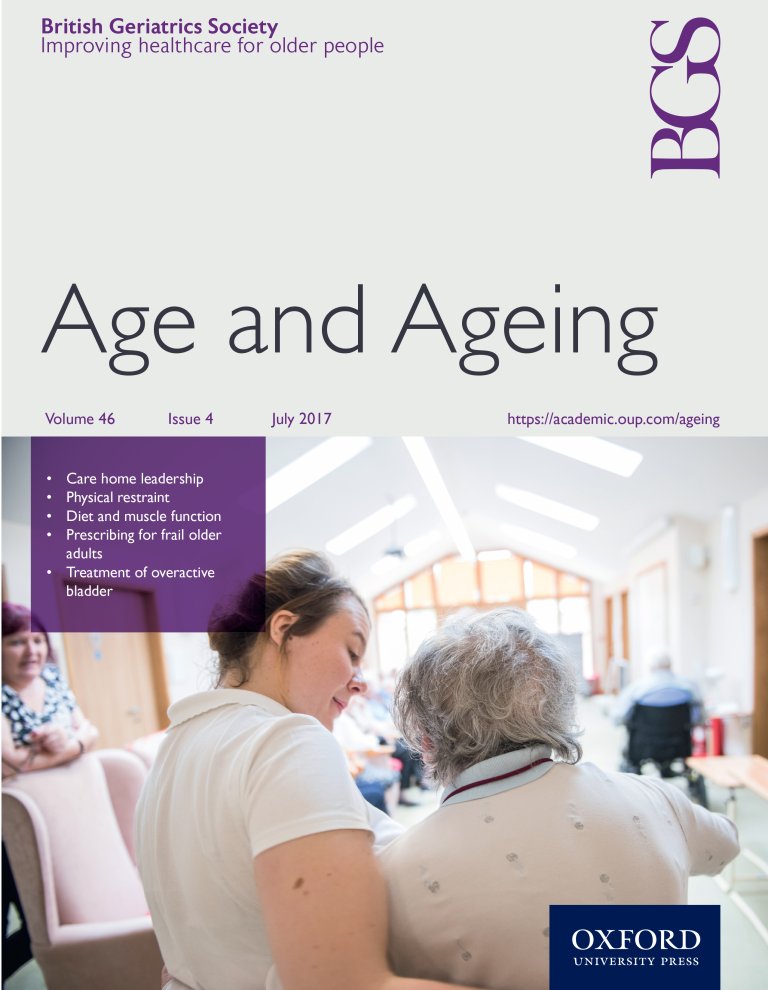Date
Dr Charlotte Squires is a Specialist Registrar in Geriatric Medicine and Digital Media Editor for the British Geriatrics Society. She Tweets at @charsquires.
What was happening in the world 50 years ago, back in February 1972? In America, NASA had just launched its space shuttle programme. In Sapporo, Japan, the Winter Olympics would have been starting. In the UK, Edward Heath was in Number 10, and had recently declared a national emergency following the miners’ strikes. On the radio, Don Maclean was singing American Pie, and in the Toby Jug pub in Tolworth, David Bowie, as Ziggy Stardust, had just opened his new tour. I suspect many of these things might have been on the radar of the readers of the very first edition of Age and Ageing, published in February 1972.
Reading back over the first issue of Age and Ageing has been insightful. Many of the themes covered still commonly feature today, with articles on bone health, urinary tract infections, and iron deficiency; the geriatric giants, it seems, have continued to age well. Other included topics, such as salivary gland infections, seem to be less common now though this might relate to changes in prescribing practices as atropine, for example, had been highlighted as a common precipitating factor.
Over the last fifty years, a key development has been improved therapeutics and in some areas, this has caused a sea change in management. Peptic ulcer disease, which features in this paper considering men with this condition residing in York, was mainly managed surgically in the early 1970s when intervention was thought to be necessary. Cimitidine did not enter use until the late 1970s, and it was not until 1988 that omeprazole was commercially available. The seminal work on H Pylori, which won Marshall and Warren the Nobel Prize in 2005, was still a decade away when this issue was published. These days proton pump inhibitors are one of the most widely prescribed medications in use and surgical management for stable peptic ulcer disease has become effectively obsolete.
Similarly, the article on osteoporosis was written before the advent of bisphosphonates and other forms of bone protection. Much of the decision making within bone health now relates to weighing up the relative benefits of established therapeutics for patients with metabolic bone disease, which as ever in geriatric medicine requires knowledge of where research has included, but also excluded, frail patient cohorts. Fifty years ago, the focus of this paper was around how to identify and classify bone disease, rather than how to treat it as the drugs were not yet developed. We still however have a number of geriatric syndromes without effective therapeutics, delirium being a prime example. I hope it does not take another fifty years to make similar progress within these fields.
I greatly enjoyed an article entitled Locating the elderly at home which found that although health records often contained inaccurate addresses for people over 65, in cases where documented addresses matched the electoral register, this inaccuracy was much reduced. I wondered whether the electoral register might still hold similar impact and was interested to read via the ONS that the over 65 age group have continued to be a reliable cohort of voters, with a higher proportion voting compared to younger counterparts. This is a phenomenon known as the ‘grey vote’ and is sometimes viewed negatively, particularly by the parties that are less favoured by older age groups in polls. In spite of this, records suggest that a lower proportion of older adults vote today, compared with the early 1970s. There might be multiple reasons for this, including for example, the increasing prevalence of dementia, or perhaps difficulty in accessing opportunities to vote. In any case, I think we can assume that our computerised records probably mean we can get away without relying on the electoral register as a second check.
Several articles concerned topics that remain a stalwart consideration in modern geriatric medical practice. A study aiming to assess the prevalence of thyroid disorder in older inpatients commented that in this population, there may be a lack of the hard clinical signs and symptoms present in younger patients, an observation that remains well established. Similarly, I enjoyed the article on the complexities of translating research around urinary tract infection diagnosis in younger women to the older cohort. I found that many of the included hypotheses remain true today and it made for an informative read. How many of us, after all, have found ourselves bemoaning that yet another older person has been diagnosed with a UTI in the absence of any clear supporting evidence?
Lastly, from its very first edition, Age and Ageing showed both an international and multidisciplinary focus. A pamphlet written by Canadian OT Mary Judd entitled Why bother, he’s old and confused, was featured as one of several book reviews. This pamphlet aimed to inspire both clinicians, and crucially, members of the wider MDT, to consider older adults more holistically, and featured a variety of practical tips and tricks regarding assessment and rehabilitation. Reading this review was simultaneously a call to arms, and perhaps a cause for despair.
It seems we are still engaged in the same advocacy battles as we were fifty years ago; we are still bothered, and we are still trying to get everyone else to bother, too.



